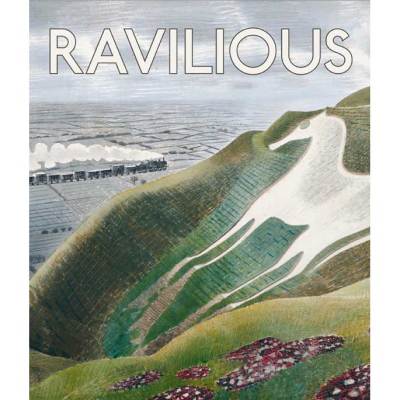The opening room of Lynda Benglis’ first UK retrospective at the Hepworth Wakefield contains a neon orange and blue sculpture fixed on to the wall. The curved form’s plump belly is marked with three gold stripes. The title, Lagniappe I (1978), refers to a word used in New Orleans for a small gift given to people when they buy something in a shop along with their main purchase. Created using cast paper, which gives the work an intriguing texture like fired clay or baked pastry, Lagniappe I looks like a cross between something toothsome straight out of the oven, a piñata waiting to be cracked, and an ancient vessel unearthed from a dig. In a recent interview for Art Monthly, Benglis relished the analogy of the gift to describe her sculpture, although she warned that ‘the gift notion is important but there has to be equality between the gift and the giver.’
For Benglis, the dynamics of exchange and mediation involved in gift-giving are as significant as the object itself. Negotiation and interplay informed Benglis’ practice from the outset of her career, which was forged in the vibrant New York art world of the 1970s. Benglis’ sculptures see her register aspects of Abstract Expressionism, Pop and Minimalism, but in a playful and parodic way that merges the irreverence of Pop with her own brand of abstraction. Like many of the Post-Minimalist artists that Benglis has become associated with, her work re-engages the body, self-reflexively thinking through the role of time and action in the construction of any given piece, as well as issues of gender and sexuality.
Benglis’ often-provocative engagement with her peers is demonstrated in the same rooms as Lagniappe I by her installation Primary Structures (Paula’s Props), first displayed at the Paula Cooper Gallery, New York, in 1975. As its title indicates, the exhibition provided an update on the ‘Primary Structures’ show at the Jewish Museum in 1966, which ushered in the pared-down geometries of Minimalist sculpture. Instead of serial units, Benglis gives us a pool of swaggering blue velvet and ersatz classical columns, which act as plinths for kitschy objects including a toy car.
The prop, like the gift, provides another analogy for Benglis’ work, pointing to its intersection with performance. A 1974 Artforum article by the critic Robert Pincus-Witten (who coined the term ‘Post-Minimalism’), employed Benglis’ own notion of ‘The Frozen Gesture’ to conceptualise her sculptures, particularly pieces included in the Hepworth show like Baby Contraband (1969) and Rumpled Painting (Caterpillar) (1968). Benglis made these using multicoloured skeins of pigmented latex, poured over the floor to create formations like petrol on water or sloughed-off reptile skins. Pincus-Witten argued that with such works, Benglis ‘transformed the place of exhibition into an environment, a site acting as a happening.’ Benglis, he concluded, ‘embraced theatricality and all it implies – temporality, performance, personality, media, exploitation.’
These aspects of theatricality are apparent in Benglis’ video works, two of which have been incorporated into the Hepworth exhibition. In Now (1973) Benglis layered a series of recordings showing her face in profile so that she seems to interact with her own image: over these, we hear her voice repeating the directive ‘start recording now’ and ‘do you wish to direct me?’ The resulting visual and sonic confusion pushes against the chronological progression and ease of transmission apparently offered by video. Elsewhere, a small antechamber at the start of the exhibition houses Benglis’ notorious Artforum centrefold, which she paid to be included as an advert in the same issue as Pincus-Witten’s article. Benglis, naked, oiled and gazing imperiously at the viewer through sunglasses, wields a huge dildo, in an image that performed a direct assault on art world gender stereotypes.
If the works in this room, which include selected photographs from the Self series (1970–76) of Benglis performing a range of identities for the camera, demonstrate her acute awareness of the interplay between transmission and reception, then those in the final section see a return to the concept of the gift, here allied with that of the vessel or container. A raised platform features a selection of Benglis’ recent ceramic works: although abstracted, they still suggest receptacles for drinking and eating – forms for commonality, sharing and sociability.
The generosity of Benglis’ works is sometimes in danger of overwhelming the Hepworth show. The decision to group the works according to sites that have been significant for Benglis’ work – Greece, New York, India and New Mexico – makes practical, pragmatic sense but feels somewhat unequal to the inventiveness and consistency of the works themselves. Yet the exhibition deftly covers a huge amount of ground in a short space, rooting Benglis in a historical context without making her into a museum piece. It is satisfying to see Benglis finally given proper recognition in the UK – and all credit is due to the Hepworth for rectifying the neglect of her practice by museums here.
‘Lynda Benglis’ runs at the Hepworth Wakefield until 1 July.
Related articles
Rule Breaker: Lynda Benglis (Imelda Barnard)
Abstraction and Representation: Women Artists and Contemporary Art (Catherine Spencer)
Review: ‘Other Primary Structures’ at the Jewish Museum (Raisa Rexer)
Review: ‘Other Primary Structures: Others 2′ at the Jewish Museum New York (Raisa Rexer)






